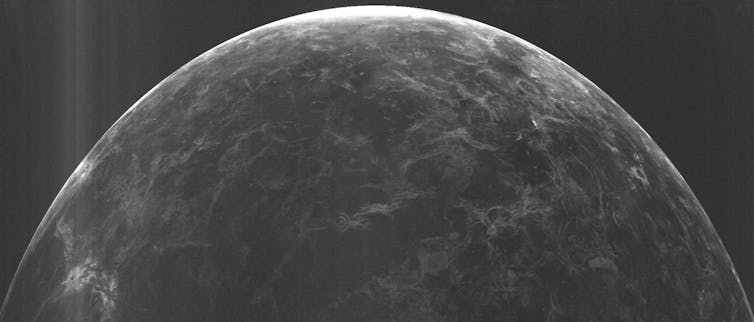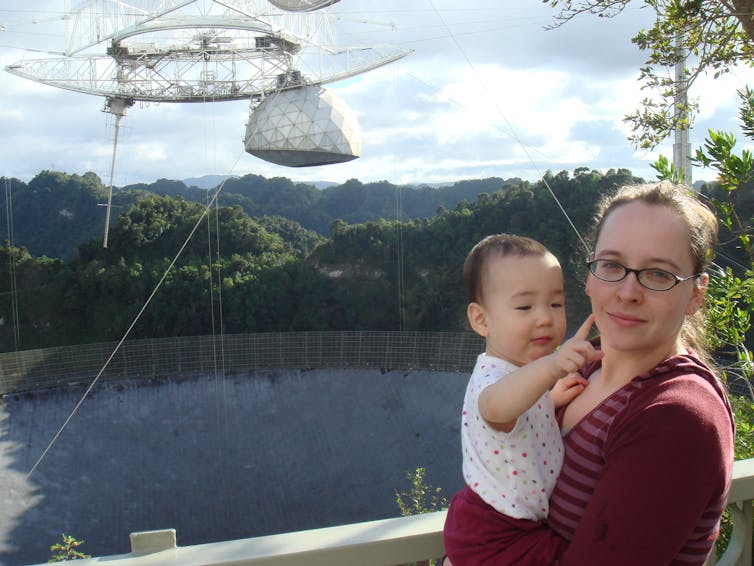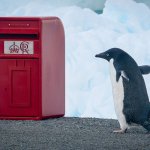Astronomers are mourning the loss of the world’s second largest radio telescope in Puerto Rico. The US National Science Foundation said the Arecibo telescope’s 900-tonne instrument platform fell onto a reflector dish some 450ft (137 metres) below – just weeks after it was announced that the telescope would be dismantled due to safety fears.
It was a sad and dramatic end for this magnificent telescope (once famously scaled by James Bond) which was the largest in the world until 2019. It has given so much to humanity from the start of its observations in 1963 and we all have reasons to be grateful and to celebrate.
We are three scientists from different fields. But we all had the good fortune of working with Arecibo in one way or another. Here are our personal perspectives and a brief list of some of its most significant discoveries.
Philippe Blondel – ‘the message’ and Venus
Surprising as it may seem, I discovered Arecibo thanks to a French journal for curious children. In a 1974 issue of Okapi, it was explained how radio telescopes were used to listen to stars, to image planets and even to send interstellar radio messages. It was the year the Arecibo message was broadcast into space.
The message was made up of basic numbers, chemistry, biology and the Earth’s location in 1,679 bits (less than a tweet). It will reach its target star system in 25,000 years – proving, if proof were needed, that Arecibo’s work will live on long after its physical demise.
Arecibo was also the telescope that gave us the first high-resolution radar images of Venus. It managed to pierce through the heavy clouds that had always limited the view of traditional optical telescopes. In 1970, it took pictures of the highly reflective Alpha and Beta regions and huge Maxwell Montes mountain chains, 11km high. Then in 1988, by measuring light across several polarisations, Arecibo showed how complex the surface of Earth’s “evil twin” (almost the same size but plagued with a poisonous atmosphere of carbon dioxide and a sweltering 470ºC surface) really was. The different terrains were seen in glorious detail and helped prepare and extend the results of the Magellan mission.

Campbell et al., (NRAO/AUI/NSF); NAIC, CC BY
Arecibo revealed how the intricate patterns of geological structures criss-cross to form tesserae (which look similar to parquet floors) that are unique to Venus and are not seen anywhere else in the solar system.
Karen Masters – hydrogen
A new, state-of-the-art seven pixel camera was installed at Arecibo in 2004 while I was completing my PhD in extragalactic radio astronomy. Radio pixels are very big and that camera is the size of a large refrigerator (it definitely won’t fit in your pocket). It was used to, among other things, detect hydrogen. Hydrogen is the most abundant element in the universe and it emits a characteristic radio signal, known as the “21cm line”.

Karen Masters, Author provided
Many galaxies have more than enough hydrogen to be detected this way. But Arecibo could also measure how fast these galaxies were rotating and how far away they are. Arecibo’s observations of galaxies in the Pisces-Perseus supercluster won Martha Haynes and Riccardo Giovanelli the 1989 Henry Draper medal for the first three dimensional map of this massive string like structure of galaxies.
Because Arecibo was so big it could detect the faintest traces of hydrogen in galaxies – the record for the most distant detections was broken by Arecibo and the Arecibo camera was used to complete a survey which discovered numerous, tiny hydrogen-rich galaxies. These discoveries challenged our understanding of how galaxies form.
Carole Mundell – The dynamic universe
Although I began my career as a radio astronomer mapping hydrogen in nearby galaxies, my research interests now focus on high energy, time-variable and transient phenomena in the dynamic universe. For me, Arecibo will remain a pioneering and enduring icon in time-domain astrophysics (the study of how astronomical objects change with time).
From its early work on pulsars to recent breakthroughs in the study of mysterious radio flashes, the telescope has probed fundamental laws of physics and motivated new discoveries with other facilities around the world.

NASA/CXC/ASU/J. Hester et al
Highlights include the 1968 discovery of clear evidence of a pulsar with a rotation period of 33 milliseconds in the Crab Nebula (this confirmed earlier suggestions by pulsar pioneer Joceyln Bell Burnell that the nebula appeared to be flashing). And the 1974 discovery of the first binary pulsar (pulsars locked in orbit around a common centre of mass).
The measurements, taken by Russell Hulse and Joseph Taylor, confirmed the loss of energy due to gravitational radiation predicted in Einstein’s General Theory of Relativity. They had used the telescope to find a new type of pulsar which opened up new possibilities for the study of gravitation and led to their 1993 Nobel Prize in Physics.
Decades of Arecibo pulsar monitoring data continue to be mined by astronomers and in 1992 the first exoplanet was discovered around a pulsar.
In 2016, Arecibo discovered the first repeating Fast Radio Burst (very short-lived flashes of intense cosmic radio waves). The origin of these bursts is still unknown but is likely lie at cosmic distances beyond our Milky Way galaxy. The Arecibo discovery heralded a new international race to solve this mystery.
Today, generations of astronomers around the world are grateful to the engineers who realised the dream of the world’s largest radio telescope and ensured it remained a world-leading facility. Arecibo’s discoveries still stand out and its long scientific legacy is secure.
![]()
Karen Masters is a member of the Committee on Radio Frequencies of the National Academy of Sciences, and on the advisory board for the Green Bank Radio Observatory.
Carole Mundell and Philippe Blondel do not work for, consult, own shares in or receive funding from any company or organization that would benefit from this article, and have disclosed no relevant affiliations beyond their academic appointment.











